You want a lawn at your Northern Virginia home that calls you outdoors to bask in its brilliant green. You want to return from work or a day away and be welcomed in by your lush lawn that frames your house perfectly. You want to be able to enjoy your lawn for activities like kicking the soccer ball with the kids, tossing the tennis ball to the dog, taking a break in it while tending to your roses, or just lounging in it and sinking your bare feet into its thick stands.
What you don’t want is a lawn that is yellowing and being slowly eaten to death by insects.
In lawns, bugs can be quite sneaky. They are usually so small that they are feasting on your grass and you don’t even know it until you see the damage, and sometimes by then it can be harder to control them because they are bigger and stronger from dining on your grass.
Some turf pests eat your grass roots like grubs, while others like to suck the moisture right out of your grass blades. Those are chinch bugs, and in large numbers they can be quite destructive.
How can you destroy these pests and get your nice green lawn back? Let’s discuss chinch bugs in your lawn, what chinch bug damage looks like and how to get a handle on chinch bug control in Northern Virginia.
A Look at Chinch Bugs In Your Lawn
Learning how to get rid of lawn grubs starts with understanding more about them.
Ever heard of Japanese beetles? June beetles? Yep, they are notorious, right? Well, guess what? In their larval stages, they are these white, C-shaped grubs. Your mind is blown, right? Another one is the northern masked chafer, but that name isn’t as recognizable.
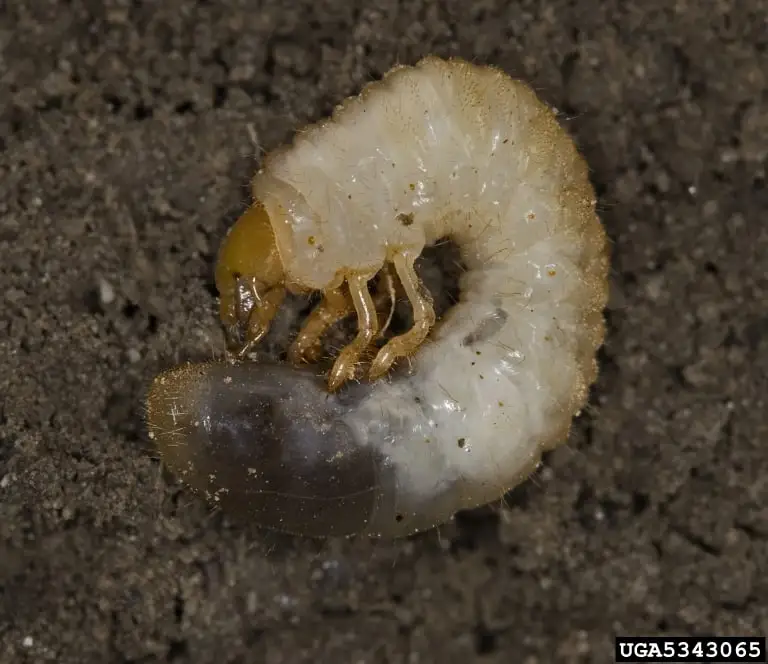
And while you may see Japanese beetles for about one month in the summer. If you see the beetles crawling around your plants, like your roses for instance, then it’s a warning sign that they may be laying eggs nearby in your lawn. This is how white grubs come to be. Then they feed on your lawn roots the rest of the summer and into fall before going deep into the soil to overwinter. They continue feeding in spring until they turn into adult beetles in later spring.
The other problem with grubs is that they are thick, tasty protein meals for animals like birds, raccoons, moles, skunks, and other animals. And if they’re hungry, they’ll dig up your lawn to get to their treats.
What Do Chinch Bugs Look Like?
Adult chinch bugs are pretty tiny – an adult can be approximately one-sixth of an inch long, so you may never notice the bugs in your lawn. They have shiny, white wings.
Chinch bugs in your lawn have piercing-sucking mouthparts that allow them to extract sap from the grass blades, causing injury that resembles drought.
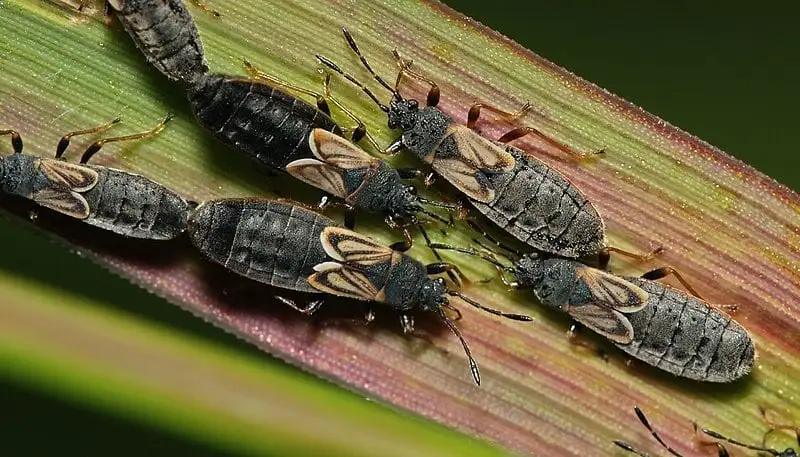
Both nymphs and adults are active and can feed on your lawn. Nymphs can vary from red to orange to brown in color.
Adults overwinter in protected areas like thatch or tall grass or in yard debris. They reemerge in spring to lay their eggs, and in two weeks females lay up to 170 eggs each in leaves or on the ground near the base of your grass blades. One generation per year is common.
What Attracts Chinch Bugs?
These small, fast-moving, sucking insects live in your lawn’s soil surface.
They prefer home lawns in Northern Virginia with thick thatch and compaction that grow in full sunlight. These bugs like cool-season grasses.
Chinch bugs in your lawn are most actively feeding on your grass blades in July and August.
If you suspect chinch bugs but can’t really see anything, you can try a test with an open-ended coffee can. Stick it about 2 inches into the soil just on the fringe of a patch of damaged grass. Fill it with water, looking for adults as they float to the surface. Add more water as it filters into the soil. In 5 to 10 minutes, you should be able to see some pests. If you don’t have an open-ended coffee can, you can also try removing a core of grass and soil with a shovel and submerging it into a bucket full of water, looking for insects to rise to the top. You may see some nymphs that are orange or red and then adults that are darker with whitish wings.
You can also attempt to visually inspect the fringes of the damaged areas where the lawn is still green. Pull back the grass and look for movement of insects beneath the thatch. But chinch bugs can be pretty tough for the untrained eye to spot.
What Does Chinch Bug Damage Look Like?
Chinch bugs are pretty bad news in Northern Virginia lawns. In fact, they can cause quite a bit of damage.
Chinch bugs cause damage by injecting their piercing and sucking mouthparts into your grass blades and sucking out the plant fluids while injecting a toxin that can cause your grass to turn yellow, and then brown, and then eventually die. We know … gross. The first sign of trouble is usually that color change in your grass.
What’s particularly bad is that when you notice first signs of small yellowing spots creeping up in your lawn, you usually assume other issues before realizing it’s chinch bugs, including drought, a nutrient deficiency, or a turf disease. As you’re trying to solve those other problems, the real issue – the chinch bugs – continue harming your lawn.
How can you tell the difference between chinch bug damage and damage caused by other things? It’s actually pretty challenging for nonprofessionals to do so. If you look closely, you might be able to see yellow grass in between the brown and green sections. Chinch bugs are so small, you likely won’t see them or tell them apart from other bugs. Your best bet is looking for areas of yellowing and browning grass that spread over a few days. Drought issues won’t spread like this. Also, when you water your lawn, water stress signs will go away, while chinch bug damage will not.
Chinch Bug Control in Northern Virginia
For chinch bug control in Northern Virginia, a curative insecticide application can handle current infestations. You treat them when they are actively feeding.
Bringing in a lawn care professional for a surface insect control treatment can significantly reduce wide scale chinch bug damage if you catch it early enough.
Unfortunately, there is no preventive treatment for chinch bugs the way there is for grubs. But you can help prevent chinch bugs by removing the conditions they love – namely thatch.
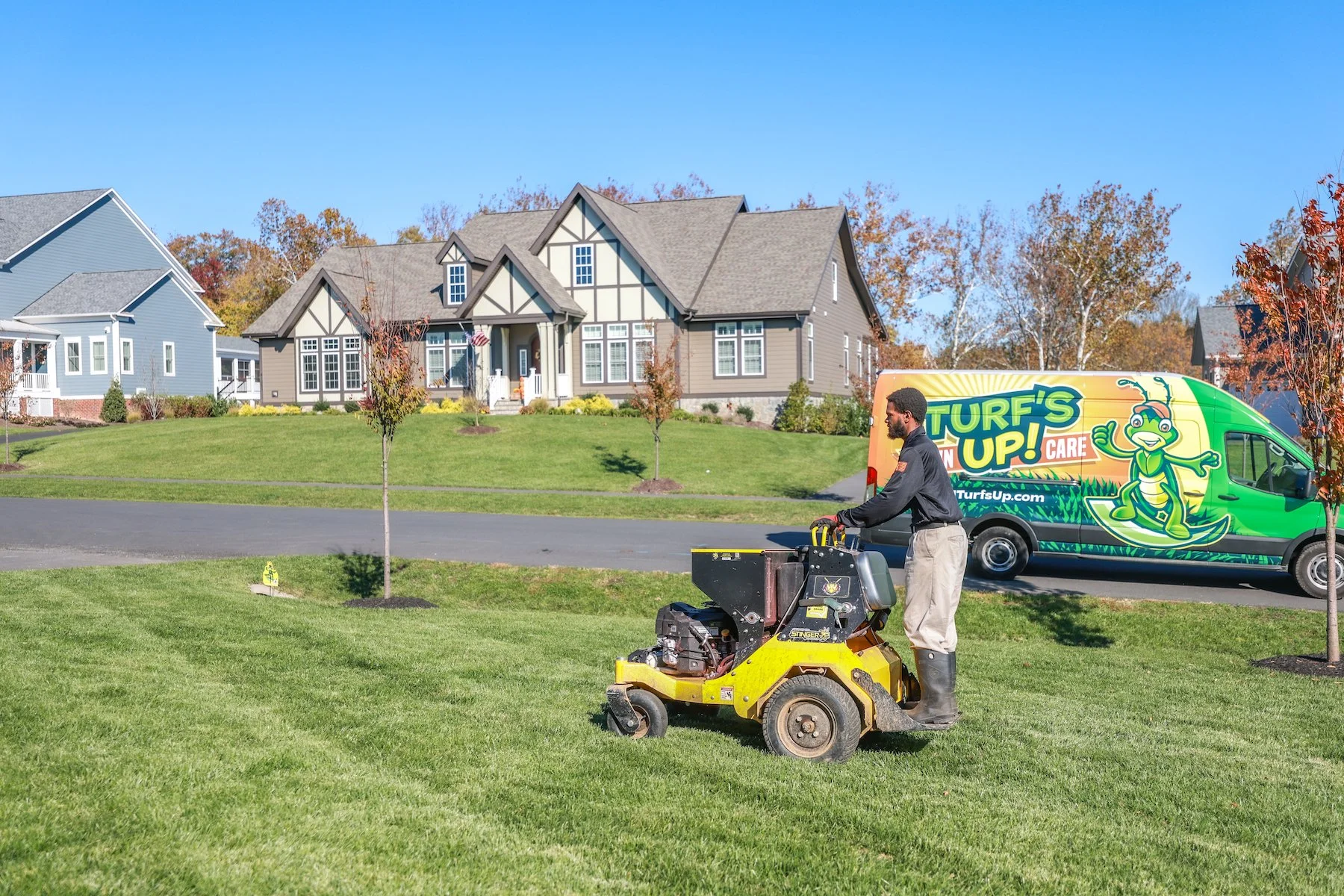
An annual aeration, overseeding, and topdressing can reduce your thatch and compaction, thicken up your lawn, and improve the health of your soil, encouraging healthier grass. Aeration is the process of using an aerator to pull soil plugs from your lawn to encourage airflow and reduce compaction. Overseeding at this time maximizes seed to soil contact to ensure better germination. Topdressing helps boost soil health.
Other preventive methods include taking care of your lawn properly so chinch bugs aren’t drawn in. A stressed lawn is one that can attract trouble like chinch bugs. It’s similar to how when you’re feeling run down, you’re more likely to catch a cold that’s going around.
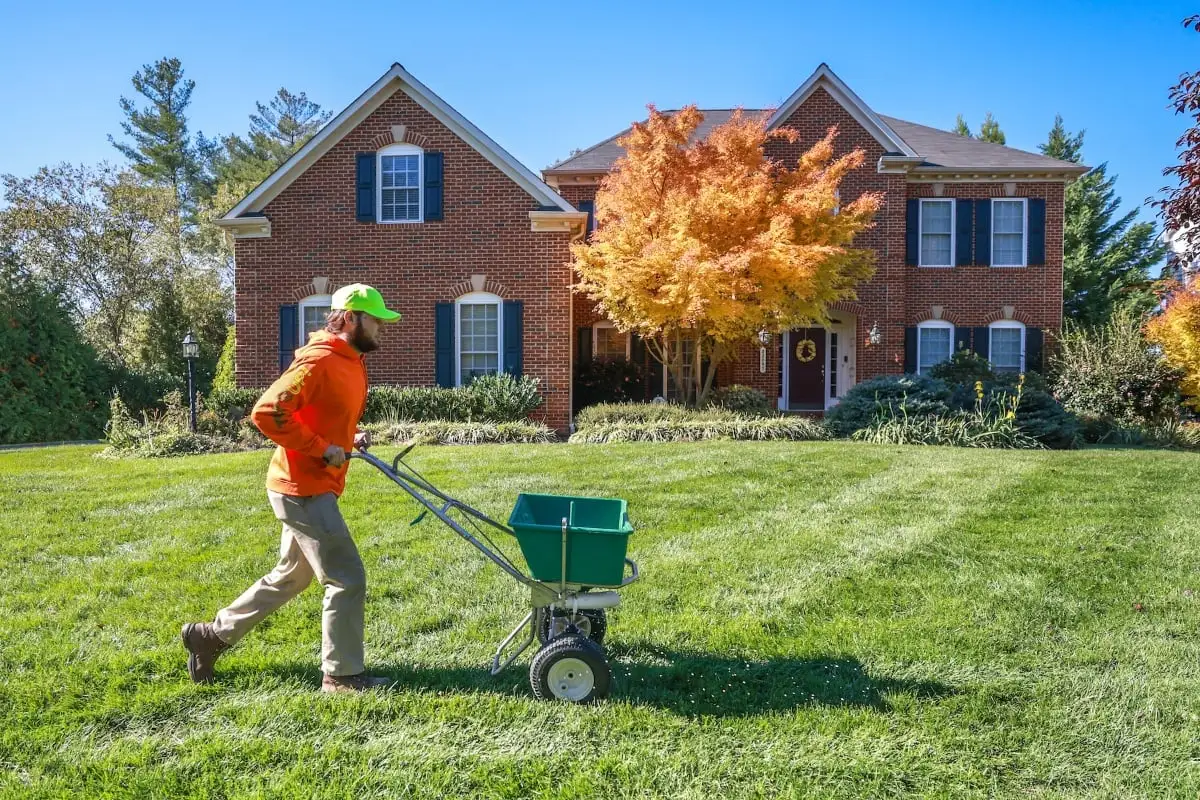
To keep your lawn healthy, remember to:
- Mow your lawn properly. In Northern Virginia, you want to mow your lawn to a 3.5- to 4-inch height. In the spring and summer, this means mowing weekly so you’re cutting off no more than one-third of the grass blades during each mowing. Remember to sharpen your mower blades so you get a clean cut versus torn or ripped blade edges.
- Water correctly. A lack of water or too much water can also stress out your lawn. For instance, if you irrigate too much or at night when your lawn can’t dry out before nightfall, you can encourage persistent humid and wet spots. If you don't water enough, you can dry out your lawn and it’ll show its stress with yellowing or browning grass.
- Properly fertilize your lawn. A soil test can help show you what nutrients your lawn is lacking so you don’t under- or over-fertilize since nutrient imbalances can also bring about stress and issues. A soil test will also reveal the pH of your lawn so you can improve this if you’re out of the optimum range.
While regular lawn care might sound like a simple means of chinch bug control in Northern Virginia, you’d be surprised how easy it is to keep lawn-damaging pests away with just these basic maintenance tasks. And they also give you a gorgeous, enviable, green lawn to boot.
Want to Get Rid of Chinch Bugs In Your Lawn? Call Turf’s Up
In your Northern Virginia yard, the very last thing you want to see are yellowing and brown spots in your lawn. They ruin that whole green picture.
And you certainly don’t want to find you have an army of tiny insects multiplying and doing the damage so effortlessly and quickly after you’ve spent so much time and money in caring for your lawn and keeping your curb appeal at its best.
You have enough to worry about in summer with the kids being home from school and summer vacation planning, not to mention family barbecues and reunions. You don’t need chinch bugs in your lawn taking up all of your time or ruining your party plans.
If you want to eliminate chinch bugs, try contacting a lawn care professional in North Virginia for proper diagnosis and treatment. An effective and swift solution could save you time, money, and – most importantly – your lawn’s appearance, vigor, and health.
Turf’s Up would love to help, so give our experts a call. We can create a custom lawn care and insect control plan for you to ensure your lawn thrives, and you have your weekends back so you can enjoy them.
Ready to learn why Turf’s Up could be your totally awesome choice for chinch bug control in Northern Virginia? We’re stoked to learn more about you and help you have the best lawn on the block. Get started today with a free quote. Together, we can prepare a customized plan that is perfect for you and your yard.
Image Source: grub in dirt, Chinch Bugs
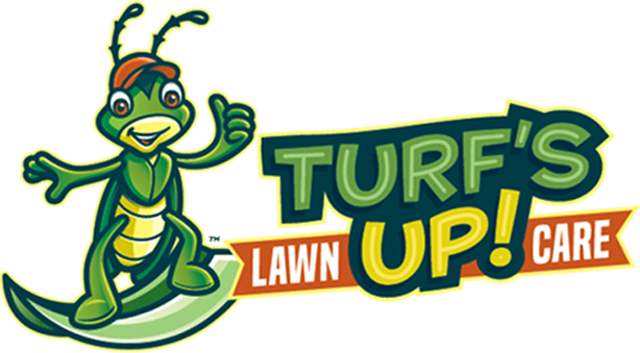





Comments (0)
Thanks for your comment!
Thanks for your feedback! Your comments have been successfully submitted! Please note, all comments require admin approval prior to display.
Error submitting comment!
There is a problem with your comment, please see below and try again.